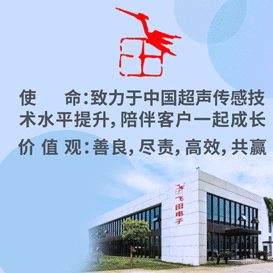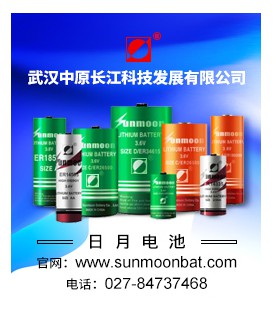管网管理以及如何降低管网漏失率是供水公司的一项主要的挑战任务。
供水管网管道长达几千公里,但每隔几米就会有一个短管接口。这些管道通常比较陈旧,又受到了路面交通及其他负载压力的影响;且大部分是铸铁管或钢管,锈蚀的影响很大;旧管爆漏导致客户服务中断是常有的是,因此管网漏失就在所难免。所以,供水公司必须有清晰的管网管理政策使漏失率得到有效的控制。
管网内水量可分为两类:被客户消费的水量和漏失掉的水量(又称水损)。水损又可细分为真正水损(物理漏失)与商业水损(或指因客户服务及计量所产生的损失)。分述如下:
^物理漏失是已经出厂但终端用户没有消费的水量。
^商业水损是已经出厂并被终端用户消费但没法收回水费的水量。
管网效率是供水公司的重要指标,它可以从下述措施中获得改善:
^降低物理漏失(如漏水、蓄水池溢流等)可以避免或延缓为提高水量或管网过水能力而不得不做的投资。
^商业水损的降低可通过改进客户服务管理来实现(如改善水表误差、打击偷水行为等),以达到增加水费回收的目的。
消费及损失水量组成
下表是消费及损失水量(灰色)组成明细表:
|
Volumes Distributed 输送水量 |
Authorised Consumption 被消耗水量 |
Authorised Billed Consumption 认可收费水量 |
Billed Measured Consumption 计量收费水量 |
Exported Water 输出水量 |
Revenue Water 销售水量 |
|
|
Residential,commercial and Industrial Customers 居民、商业及工业用户 |
||||||
|
Unmeasured Billed Consumption 未计量收费水量 |
||||||
|
Authorised Unbilled Consumption 认可的非收费水量 |
Measured Unbilled Consumption计量非收费水量 |
NRW Non-Revenue Water 产销差 |
||||
|
Unmeasured Unbilled Consumption未计量非收费水量 |
||||||
|
Operational Usage营运水量 |
||||||
|
Losses 水损 |
Apparent Losses (or Commercial and Metering Losses)表面水损(商业水损或计量水损) |
Illegal Usage 非法用量 |
||||
|
Metering Losses计量水损 |
||||||
|
Billing Losses水费回收水损 |
||||||
|
Real Losses (Physical Losses) 真正漏损(物理漏损) |
Leaks on Primary Networks 主管网漏失 |
|||||
|
Leaks and Overflows on Operators Storage Facilities 水厂蓄水设施漏失或溢流 |
||||||
|
Leaks on Network 管网漏失 |
Visible leaks 可见漏失 |
|||||
|
Invisible Leaks 不可见漏失 |
||||||
除上表详列消耗水量及水损分类外,我们还可以用下图来加以描述。

指标
供水公司通常使用的指标很多,具体如下:
供水量水损百分比
供水公司最常用的水损指标是水损量占供水量或计算地区供水量的百分比。
这一指标简单明瞭,便于计算,但有两个缺点:
这是一项国际通用指标,但无法体现水损分类。
不能对不同类型管网的运行状况进行合理比较。
根据各种参考值或长度因素计量的单位水损
以某个参考值除以年水损量,可获得可比较的比率,从而对不同规模、不同特点的管网进行比较。
常用比率如下:
单位管网长度的水损
单位进户管的水损
单位物业的水损(如英国)
单位管网总长(包括管网和进户管)的水损
推荐方法
当考虑一个已知管网时,一定要尽可能详细地了解,包括水损数据和导致水损的不同因素,以便制定可行的计划来降低水损。
一旦建立“水损饼图”,各项指标的计算就很简单了。
Network Efficiency = (Billed volumes + Authorised unbilled consumption + Exported volumes) / (Total Volumes supplied to the system).
管网效率=(收费水量+认可非收费水量+传输水量)/总供水量
管网效率可以按12个月滚动平均做基础。
或者
LLI (Linear Loss Index in m3/year/km) = Loss (in m3/year) / Length of network (excluding the length of the service connections in km)
LLI(线性水损指数m3/年/公里)=水损(m3/年)/管网长度(不包括进户管长度)
对一个管网经理来说,最基本的是要降低产销差水量(用立方米表示)。用立方米表示的水损计算比较单一、简单,因此通常被用作其他指数的计算基础。
实施计划应包括的内容
前三部分的目标主要是让大家知道影响水损值的主要数据越精确越好。
1.供水量总计量的控制与优化方案
2.抄表及发单收费的优化方案
3.特许的非收费水量的控制与降低方案
接下来的三个部分的主要目标是降低水损每个主要元素。
4. 物理漏损的检测与降低方案:检测维修可见与不可见漏水点,更新管网,控制蓄水池溢流。
5.减少水表(负)误差数量方案,或称水表圆管理。(即减少慢表,提高收费水表)
6.商业水损的检测与降低方案(客户服务管理)
最后,不论使用什么方案降低水损,只有改进公司的运行状况(架构、流程、人力资源等)才能产生永久的效果。
下表列出了部分通常要求的典型诊断和行动计划。
|
TYPE OF LOSS 水损类别 |
D:DIAGNOSTIC(*)诊断 |
P: ACTION PLAN(**) |
|||
|
A |
EFFICIENCY CALCULATION 效率计算 |
||||
|
Volumes produced and imported 生产及输入水量与输出水量 |
DA1 |
Existence of meters(or not) |
PA1 |
Installation or replacement of flowmeters |
|
|
DA2 |
Maintenance procedures |
PA2 |
Improvement of maintenance procedures |
||
|
DA3 |
Test on meters |
PA3 |
Tests and calibration of flow-meters(continued) 调试校正流量计 |
||
|
Volumes consumed and billed 认可消费水量和发单水量 |
DA4 |
Diagnostic of customers procedures |
PA4 |
Improvement of customers procedures |
|
|
DA5 |
Diagnostic of information system |
PA5 |
Improvement of replacement of |
||
|
Volumes legally consumed |
DA6 |
Inventory |
PA6 |
Meter installation campaign (when possible) |
|
|
DA7 |
Measurement or evaluation procedures |
PA7 |
Reduction of water service consumption |
||
|
DA8 |
Test of evaluation |
PA8 |
Reduction of exonerated consumption |
||
|
General 概述 |
DA9 |
History |
PA9 |
||
|
B |
PHYSICAL |
||||
|
Visible leaks |
DB1 |
Statistic |
PB1 |
Improvement or creation of call centers |
|
|
DB2 |
Audit on procedures |
PB2 |
Reduction of repair duration |
||
|
DB3 |
Visual pilot survey |
PB3 |
Formation of team for visible leaks detection |
||
|
DB4 |
PB4 |
Location of leaks on GIS |
|||
|
Invisible leaks |
DB5 |
Statistic |
PB5 |
Purchase of equipment |
|
|
DB6 |
Audit on method used |
PB6 |
Formation of team for invisible leak detection |
||
|
DB7 |
Pilot detection campaign |
PB7 |
Outsourcing of leak detection |
||
|
DB8 |
PB8 |
Invisible leaks detection and repair campaign |
|||
|
DB9 |
PB9 |
Installation of a monitoring |
|||
|
Leaks on mains |
DB10 |
Statistic |
PB10 |
Leak detection campaign with appropriate equipment |
|
|
DB11 |
Audit on procedures |
PB11 |
|||
|
Tank overflow |
DB12 |
Audit on protection equipment |
PB12 |
Installation or rehabilitation of tanks |
|
|
DB13 |
Audit on tele information |
PB13 |
Remote system control |
||
|
Tank infiltration |
DB14 |
Audit of drains |
PB14 |
Repair of leaks and/or waterproof joints replacement 修漏或更换止水缝 |
|
|
General |
DB15 |
Audit on sectorisation (districts) |
PB15 |
Waste districts metering system 废水排放系统安表 |
|
|
DB16 |
Audit on pressure of service |
PB16 |
Pressure Control System |
||
|
C |
METERING LOSSES |
||||
|
Undermetering due to |
DC1 |
Analyse of the database |
PC1 |
Program of Meter Replacement |
|
|
Undermetering due to |
DC2 |
Sample study on large customers |
PC2 |
Program of Replacement or Resizing |
|
|
Undermetering due to meter aging |
DC3 |
Sample study on small meters |
PC3 |
Massive Replacement Program of small meters |
|
|
DC4 |
Profile of consumption |
PC4 |
Studies of meters-datalogging |
||
|
DC5 |
PC5 |
Test of new meters and technical watch |
|||
|
DC6 |
PC6 |
Purchase of a meter test bench |
|||
|
D |
COMMERCIAL LOSSES |
||||
|
Illegal connections |
DD1 |
Inventory on pilot area |
PD1 |
Complete census |
|
|
Frauds on registered connectins |
DD2 |
Analyse of the existing database |
PD2 |
Targeted census |
|
|
DD3 |
Sample surveys |
PD3 |
Targeted field surveys |
||
|
Frauds on equipment |
DD4 |
Inventory |
PD4 |
Communication campaign |
|
|
DD5 |
Sample surveys |
PD5 |
|||
|
Low income areas |
DD6 |
Pilot surveys |
PD6 |
Multi-purpose actions depending |
|
|
Billing losses |
DD7 |
Survey on IS and procedures |
PD7 |
Improvement of Customer Services of procedures |
(*)通常来讲,任务D的黑体部分是最后诊断的内容。
(**)任务P的黑体部分是最常采用的措施。任务D与任务P同行之间没有关联。
照片
 |
 |
|
引至大面积停水的某城市中心大型水管爆管
|
听漏
|
 |
 |
|
使用Permalog系统测漏
|
管道接头漏水
|








